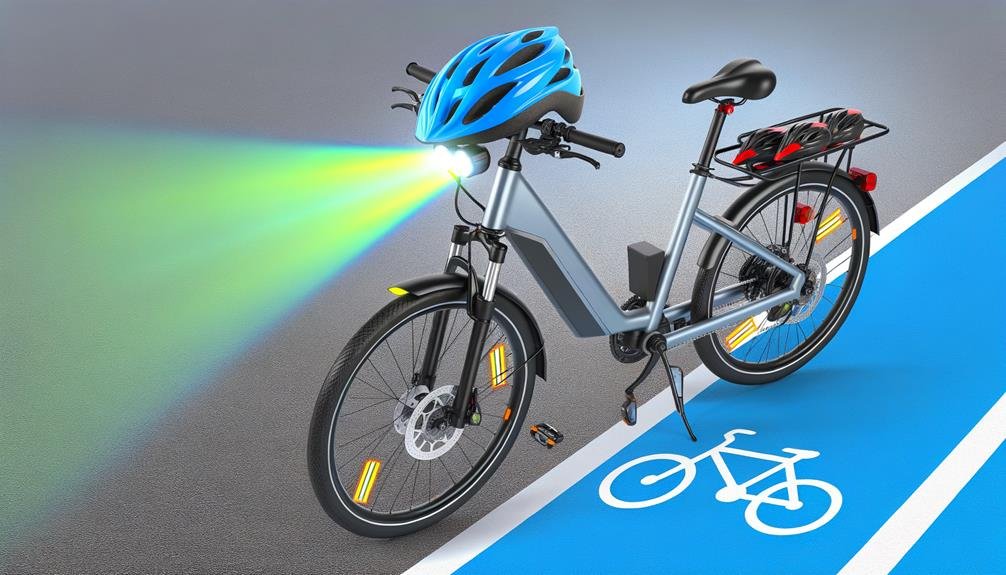Charles Miller is a veteran bike enthusiast with over 12 years of experience dealing with bikes as a mechanic. Despite immense love and expertise for...
Biking bliss awaits us all in the world of e-bikes. But the burning question is: which one is the right fit for us? With an array of models on the market, each offering different features and catering to various riding styles, it could seem like an overwhelming task.
We'll need to consider multiple factors, from our riding terrain and daily distance to our body shape and personal preferences. As we journey through this discussion, we'll uncover the factors that truly matter in our quest for the perfect e-bike.
So stick around, you're about to discover a whole new world of pedal-powered possibilities.
Key Takeaways
- Understanding the different classifications of ebikes (Class 1, Class 2, Class 3) is crucial when choosing the right bike for your needs and preferences.
- Consider the motor type, battery capacity, pedal-assist levels, and integrated accessories when evaluating different ebike features.
- Proper ebike fit is essential for maximizing comfort, power, and overall riding experience.
- When comparing ebike types, factors such as purpose of use, terrain, battery capacity, motor location, and unique features should be taken into account.
Understanding Ebike Classifications
To fully understand the world of ebikes, it's essential to grasp the three main classifications that these electric bikes fall into, each offering varying levels of motor assistance. This knowledge is a fundamental part of belonging in the ebike community, particularly when buying an electric bike.
Class 1 ebikes are pedal-assist only, providing support up to 20 mph. This electric motor makes cycling less strenuous, particularly on uphill climbs. Class 1 is popular among electric commuters and pedal-powered cargo bikes, combining the benefit of a workout with the ease of motor assistance.
Class 2 ebikes offer both pedal assist and throttle mode, allowing riders to use electric propulsion alone up to 20 mph. These are versatile, suitable for leisure rides or electric cargo transportation. The flexibility to switch between pedal and throttle mode offers a balance between exercise and convenience.
Lastly, if you're after speed, Class 3 ebikes provide pedal assistance up to 28 mph. This class is ideal for longer commutes but note, the increased speed can impact battery life.
Understanding these Three Classes and their distinct features is key to finding your fit in the ebike community, whether you're a casual rider or a daily electric commuter.
Evaluating Ebike Features
Diving into the nuts and bolts of ebike features, we'll examine factors such as motor type, battery capacity, pedal-assist levels, integrated accessories, bike type, and purchasing considerations, all crucial in tailoring your ebike experience to your specific needs.
Electric bikes' motors come in various forms like mid-drive, rear-wheel hub, or front-hub drive. Each has its impact on the electric assist feel and handling, with some offering smoother rides than others.
Battery capacity, measured in watt-hours (Wh), influences the ride's range. A larger battery will provide a longer range, but also longer charge times. Some bike manufacturers even offer the option for multiple batteries.
Pedal-assist levels are another key feature. Higher levels provide more assistance, making rides easier, particularly on hilly terrain. Integrated accessories such as lights, racks, displays, and security features further enhance the experience.
Finding the best electric bike also involves considering the bike type. From commuter bikes to mountain or cargo bikes, your choice should align with your usage and terrain.
Lastly, it's smart to consider purchasing factors like financing options, global supply chain impacts, and second-hand choices to ensure you're making a well-informed decision.
Importance of Ebike Fit

While it's essential to consider features and purchasing factors, we mustn't overlook the importance of a proper ebike fit—a critical aspect that can greatly influence your riding comfort, efficiency, and overall satisfaction.
A good fit isn't just about finding one bike that feels comfortable when you first sit on it. It's about ensuring that the ebike is tailored to your body, maximizing your pedaling power and minimizing any discomfort or risk of injury.
We encourage anyone who wants the best bike experience to take a test ride before buying. This step is crucial to make sure the ebike doesn't just look good, but also feels good.
Comparing Different Ebike Types
Navigating through the diverse world of ebikes, it's crucial we compare different types, taking into account factors such as purpose of use, terrain, battery capacity, motor location, unique features, and the specific kind of ebike. Understanding how the electric part works is key to choose the right bike for you.
Here's a comparison of three popular ebikes: Electric mountain bikes, Rad Power bikes, and electric road bikes.
| Ebike Type | Notable Features | Best Used For |
|---|---|---|
| Electric Mountain Bikes | Robust motor and battery, designed specifically for rough terrains | Off-road trails |
| Rad Power Bikes | High-capacity battery, versatile configurations makes it possible for commuting or cargo | Daily commutes, cargo transport |
| Electric Road Bikes | Lightweight, efficient drive system, designed for speed | Road cycling, long-distance travel |
Each ebike type has its unique features. Electric mountain bikes, for instance, are ideal for off-road trails, thanks to their robust motor and battery. Rad Power bikes are versatile and perfect for daily commuting or cargo transport, while electric road bikes feature a lightweight design and efficient drive system for speed and long-distance travel. Swing by your local bike shop to test some out and find the ebike that's right for you.
Electric Bike Safety Considerations

Having established the key differences between various ebike types, it's equally important to discuss the safety considerations that come with riding these high-speed machines. As a community of ebike enthusiasts, understanding these electric bike safety considerations is crucial for our wellbeing.
Electric bikes, especially those designed for the commuter, can reach considerable speeds due to the assistance offered by the electric motor. This increased speed can heighten the risk of accidents. Therefore, it's essential to adhere to state and local regulations regarding ebike usage.
Keeping safety at the forefront, we recommend:
- Wearing a helmet: Consumer Reports highlights that this significantly reduces the chance of head injuries.
- Wearing bright clothing: This enhances visibility, making you noticeable to others on the road.
- Using dedicated bike lanes: These are designed to protect cyclists from motor traffic, providing a safer environment.
Frequently Asked Questions
How Do I Choose the Right Electric Bike for Me?
We'll consider factors like ebike affordability, durability, terrain suitability, distance coverage, bike weight, battery lifespan, maintenance needs, safety features, and brand reputation to ensure riding comfort and find the perfect electric bike for us.
Do I Need a 1000W Ebike?
We'll need to consider battery longevity, speed comparisons, terrain suitability, safety, riding distance, charging times, maintenance, price, legal restrictions, and environmental impact to determine if a 1000W ebike is right for us.
How Powerful an Ebike Do I Need?
"We'll consider power calculation, bike efficiency, and battery longevity. Also, we'll account for speed, terrain, commute length, rider weight, load capacity, motor types, and energy consumption. It's a science to find your perfect ebike!"
What Is Better a 36V or 48V Ebike?
We're discussing whether a 36V or 48V e-bike's better. We'll consider battery lifespan, voltage impacts, performance, longevity, charging times, safety, maintenance, terrain suitability, travel distance, and price disparities. Let's dive in!
Conclusion
In the end, finding the right e-bike isn't rocket science. It's about knowing what you need and what each bike offers. We've dissected the factors from bike classifications to features, fit, types, and safety.
Now, it's up to you to weigh your options and make the right choice. Remember, the proof of the pudding is in the eating, so don't shy away from test rides. Let's get you on the e-bike that fits like a glove!

Charles Miller is a veteran bike enthusiast with over 12 years of experience dealing with bikes as a mechanic. Despite immense love and expertise for his Tacoma, he rides his Trek Ebike more. Anytime you meet him, you’ll either hear him talking about Bikes, or writing about all things bikes and cars on this blog.
More Posts


